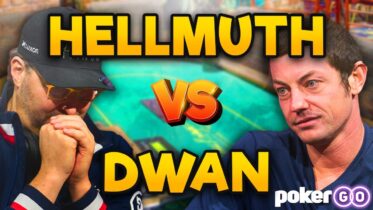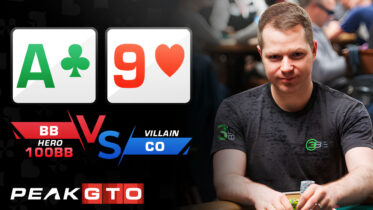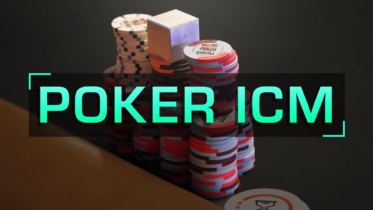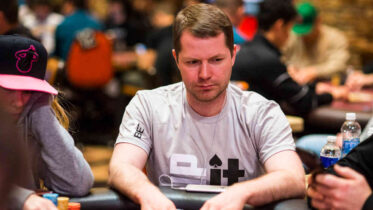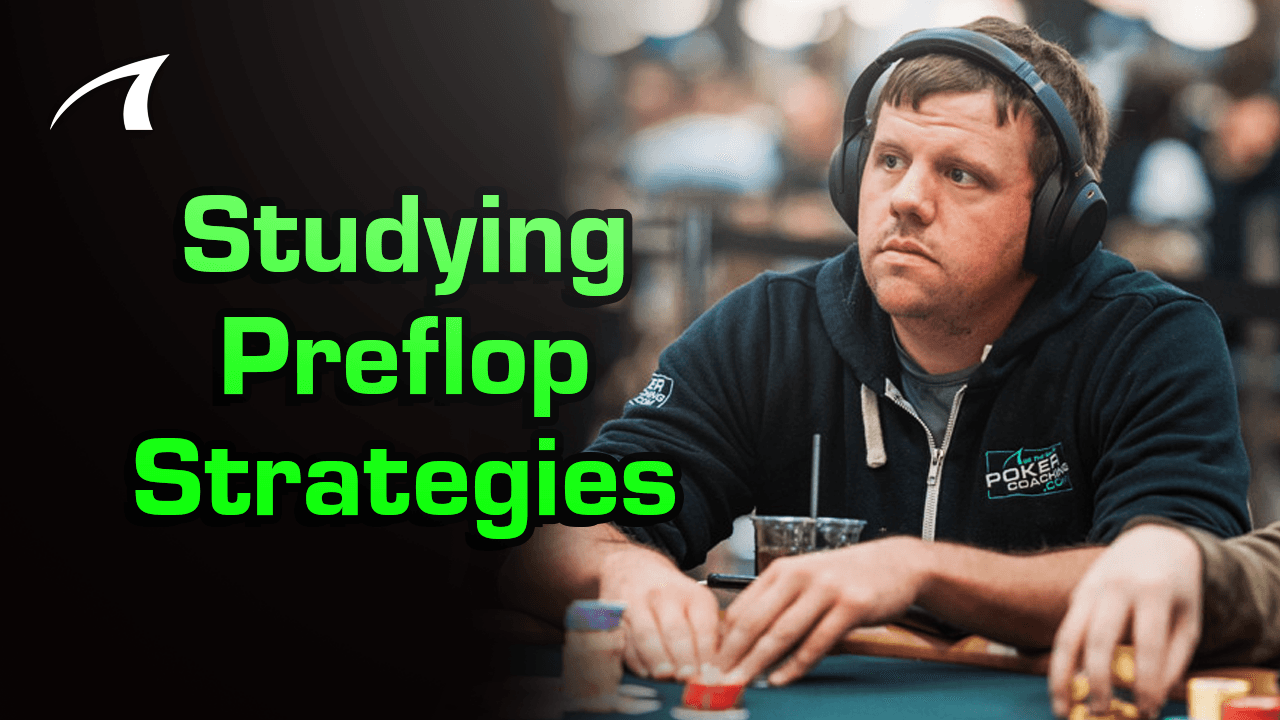High Stakes Duel III – Round 3
After defeating the likes of Daniel Negreanu and Antonio Esfandiari, it seemed like no one could beat Phil Hellmuth as he increased his High Stakes Duel winning streak to 7-0. While Hellmuth had every reason to be confident, he would meet his match when high stakes legend Tom Dwan came to the Aria and took down the champ. Suffering a defeat in their first match, Hellmuth pulled out all of the stop to avenge his loss, but did he have the goods to defeat durrrr?
The Game: High Stakes Duel III – $200,000 Sit & Go
Blinds: 800/1,600
Stack Sizes: 109 Big Blinds Effective
The Range Of The Poker Brat
Following a limp from Hellmuth, Dwan would look down at 10♥-10♦ and raise to 5,600. While a perfectly fine hand to raise, Dwan may have had some cause for concern when Hellmuth three-bet 21,000. Hellmuth was clearly representing a premium hand, but it is well documented the all-time leader in WSOP bracelets can get out of line three-betting with all sorts of junk heads-up. Hellmuth could have had anything from aces to 7-2 off-suit, so what was the proper play for Dwan? A four-bet could have been tempting considering Hellmuth’s wide range, but any pocket pairs better than tens would have spelled disaster for Dwan’s stack. Even if Hellmuth was holding junk, calling and keeping him in the hand allowed Dwan to extract more value from Phil’s loose play. Facing an opponent with a range all over the map, Dwan made the call and took it to the flop.
Quite Uncoordinated
The Pot: 42,000
The Board: J♠-7♦-2♥
Effective Stack: 95 Big Blinds
On a dry board, Dwan checked out of position and was met by another check from Hellmuth. With position, the aggression Hellmuth showed preflop suggested a strong hand that would continuation bet almost all flops, but often times Hellmuth favors simply checking. Hellmuth’s actions thus far in the hand suggested he was highly polarized, but what is in his checking range? Checking back this flop, Phil can certainly have ace-high, some weak jack combos, and could even have mid-tier pocket pairs or 7-x combos. Even though he was behind to hands containing jacks, Dwan could be confident he was ahead with his marginal made hand.

Are you an online tournament crusher? Take the quiz to find out
A Second Siete
The Pot: 42,000
The Board: J♠-7♦-2♥-7♣
Effective Stack: 95 Big Blinds
The second seven was certainly annoying for Dwan as all of Phil’s hands containing a seven got there on the turn. Many players would think leading out would have been the best move for Dwan; the problem with this rationale is that Dwan would only get called by hands that beat him. Additionally, checking allows Hellmuth to stay in the hand with hands Dwan beats, hands Dwan can extract value from by keeping Phil in the hand. Following a check from Dwan, Hellmuth bet 17,000, drawing a call from Dwan. Given the fact that Hellmuth could have easily been betting with a value hand he could beat, calling was the only rational play for Tom.
Are Tens Good?
The Pot: 76,000
The Board: J♠-7♦-2♥-7♣-9♥
Effective Stack: 84 Big Blinds
With another card lower than a ten, Dwan could have very well had the best hand before the showdown. After checking, Dwan would face a 37,000 bet from Hellmuth. When a lot of players bet for half the pot on the river, they prominently use this sizing with most of their made hands or their bluffs. Different opponents have different tendencies at the poker table, making it critical you pay attention to patterns you can take advantage of! If you’re Tom Dwan and know your opponent only makes this bet with the nuts, you have an easy fold. The problem, though, is that his opponent was Phil Hellmuth.
Capable of mixing it up, Hellmuth certainly put Dwan in a tough spot, but what was the right move? Holding two tens, Dwan blocked a number of bluffing hands. That may sound good, but it actually decreased the likelihood that Hellmuth was bluffing. Hellmuth lacked a lot of hands that could have been played as bluffs, with the only feasible ones being overcards that missed the board. It is worth noting that presuming what your opponent has can be detrimental to your play; a good, strong opponent like Phil Hellmuth is capable of mixing it up, making it hard to fully predict what they are doing with what. While reluctant, a call was the best move Dwan could make given the wide variety of hands Phil may have had and the pot odds.
Conclusion: Hellmuth Lucks Out And Retains His Crown
Making the call, Tom Dwan was likely dismayed to see his opponent three-bet preflop with 7♥-4♦ and get there on the turn. While being the first player to defeat Hellmuth at PokerGo Studios, Dwan could not repeat the feat. As the entire poker world waits to see if Dwan returns for the rubber match, rest assured, PokerCoaching.com will be ready to analyze more high-stakes, heads-up play.
